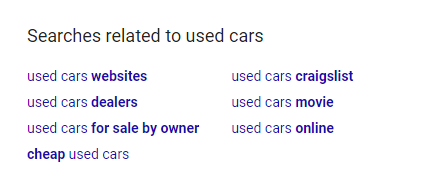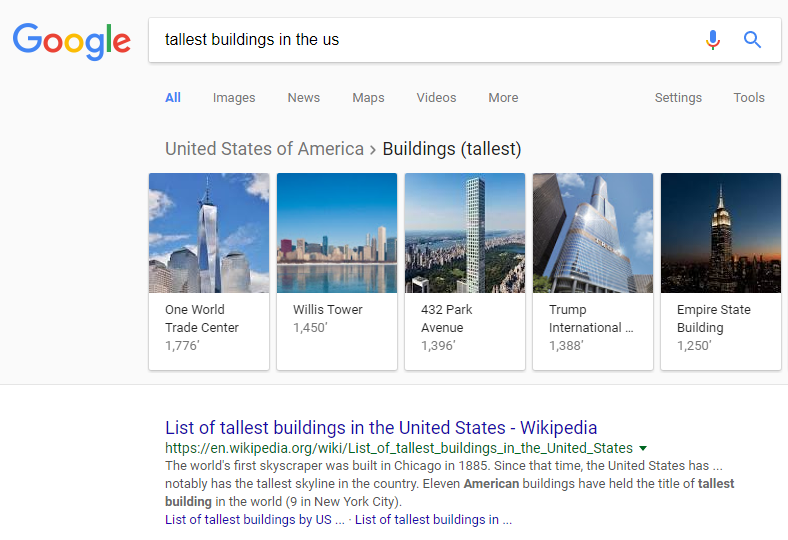Keyword Density: Does It Still Matter for SEO?
Keyword density is a foundational concept of search engine optimization (SEO). It’s important to understand how keyword density works, since it can have a direct impact on your site content’s visibility in search engine results pages (SERPs) and on the costs of your online marketing campaigns.
However, the relative importance of keyword density in most search engine ranking algorithms, including Google’s, has changed over the years, so it’s especially key to understand how this concept will impact your SEO in the post-Panda world.
What Is Keyword Density?
Keyword density refers to the number of times a keyword appears on a given webpage or within a piece of content as a ratio or percentage of the overall word count. This is also sometimes referred to as keyword frequency, or the frequency with which a specific keyword appears on a webpage.
Keyword density formula
Keyword density can also be calculated as a specific figure, should you need to. To determine the keyword density of a webpage, simply divide the number of times a given keyword is mentioned by the total number of words on the page – the resulting figure is the keyword density of that page.
What Is TF-IDF?
A more advanced way of measuring keyword density, TF-IDF stands for “term frequency and inverse document frequency.” This statistic is often used in information retrieval or text mining as a way of determining how important a given term is to a document. Variations of TF-IDF may be used by search engines in some circumstances to quantify the relevance of a page’s content to a user’s search query, but as always, many other SEO factors come into play.
What’s the Right Keyword Density for SEO?
As with virtually all aspects of SEO, there are no clearly defined “rules” when it comes to keyword density. You won’t find any guidelines from Google that tell you exactly how many keywords a piece of content should contain, nor are there any specific figures or statistic you can rely upon that govern how densely keywords should or should not appear on your site.
There are, however, some considerations that can help you ensure your content is optimized that can increase the visibility of your content and improve the overall experience of your audience.
What Is Keyword Stuffing?
About 10 years ago, when SEO was still an emerging discipline, a technique known as “keyword stuffing” became very popular. Keyword stuffing is the practice of cramming as many keywords as possible on a webpage, often in a way that feels forced and unnatural to the reader.
Typically, this was accomplished by including lengthy footers at the bottom of webpages, which would contain dozens – or even hundreds – of slight keyword variants of common search terms. This technique could often be seen on hotel websites, which would often feature footers that consisted of hyperlinked keywords: “cheap hotels Barcelona”, “cheap hotels Cairo”, “cheap hotels Dresden”, for example, each of which would take visitors to another webpage featuring a similarly crowded, keyword-stuffed footer.

Google’s example of keyword stuffing
Although this practice may seem unusual today, this technique offered unscrupulous search engine optimization professionals an effortless way to rank on the first page of Google results for virtually any keyword you could imagine. At the time, Google’s algorithms were not yet sophisticated enough to interpret these keyword-stuffed pages as what they were – a cheap “hack” to engineer the SERPs – and so these pages would typically rank very highly.
Not so today. The precise factors Google uses in its search algorithms – often referred to as “ranking signals” – remain a closely guarded secret, but we do know that Google penalizes sites that employ overt keyword stuffing in thin content. As a result, you should avoid cramming as many keywords as possible into your webpages, as this is likely to have the completely opposite effect to the desired result.
Use our Free Keyword Tool to find traffic-boosting keywords for your site!
How Many Keywords Should I Use in My Content?
As we mentioned earlier, there are no hard-and-fast rules about keyword density. To complicate matters further, keyword density can and should change depending on the nature of the content in question; a timely, syndicated news article, for example, may need significantly fewer keywords to rank highly than an older evergreen blog post.
However, there are some unofficial guidelines that can help you make decisions about your keyword targeting strategy.
Many SEOs recommend including one keyword per roughly 200 words of copy. In other words, if a webpage consists of a single, 200-word paragraph, it should contain no more than one keyword. You may be able to “safely” include more keywords than this (i.e. without being penalized by Google), but roughly one keyword per 200 words of copy is considered a good benchmark by the SEO community.
What About Keyword Variants?
Keyword targeting still forms the basis of a great deal of today’s SEO techniques, and another SEO best practice you should consider adopting is that of using keyword variants.

The “Searches related to” section at the bottom of a SERP can be
a very useful tool to find new keyword variants based on actual
searches conducted by users
Keyword variants are slight variations on a given keyword. A user searching for used cars for sale, for example, may use search terms other than “used cars for sale” when trying to find a dealer. They might use “secondhand vehicles for sale” or another different yet closely related search term, such as one of the keywords featured in the image above.
The keyword intent behind these searches is the same – the user wants to locate and likely purchase a used car – but the keywords themselves may differ quite widely. This is why it is important to target keyword variants, as this anticipates the numerous ways in which a potential lead may find your business during a Google search, maximizing potential visibility for strongly commercial queries.
However, the concept of keyword variants is also highly nuanced, which can lead to mistakes and missed opportunities if handled incorrectly. Our “cheap hotels” keywords from earlier are prime examples of keyword variants that can prove problematic for newcomers to SEO.
By themselves, this kind of keyword variant – “cheap hotels Boston”, “cheap hotels Cincinnati” and so on – aren’t “bad” keywords. They can still be relevant and useful, as they would be for searchers seeking accommodations in major cities around the world. They can be harmful, however, when crammed into a webpage, as we established earlier. This means you must exercise caution and good judgment when choosing to include keyword variants in your content.
In short, you can and should use keyword variants on single webpages and across the entirety of your site to maximize visibility and appeal to as broad – and relevant – an audience as possible, but you should still aim for only a single keyword or keyword variant per 200 words of copy.
What Is Keyword Clustering?
When it comes to Google’s search algorithms, relevance is crucial. Although it’s important to avoid stuffing your webpages with keywords, Google’s algorithms are believed to “look for” groups of semantically related keywords within web content for contextual clues as to what that content is and what it does.
This is the basis of a concept known as “keyword clustering.”
When Google’s spiders – software programs that “crawl” and index the pages of a website – encounter keywords on a webpage, these programs often contextualize keywords in relation to the content surrounding them. This means that Google “expects” certain keywords to be present in relation to other keywords. As such, “clustering” relevant keywords together can be a highly effective way of increasing visibility.
For example, we could search Google to find out the tallest buildings in the United States, which would provide us with the following results:

As we can see, we’re provided with a carousel-style series of image results, each of which includes the height of each building measured in feet. The top organic search result, as it so often is, is the Wikipedia entry for the list of the tallest buildings in the United States, due to Wikipedia’s immensely strong link profile.
Let’s say you work as a content marketing manager for an architectural firm. You want a blog post about the tallest buildings in the U.S. to rank highly, so you write a listicle about America’s tallest skyscrapers. Google “knows” that the tallest building in the United States is One World Trade Center in New York City, so Google “expects” this keyword to be present in content about America’s tallest buildings.
Given that this kind of article is typically structured as a list that also usually includes several of the other buildings seen in the image above, Google may also look for these contextually relevant keywords in this content, as these keywords are often clustered together. Including other unique yet closely relevant keywords in clusters like this can be an excellent way to improve the relevance, and therefore visibility, of your content.
Test Early, Test Often
As with almost everything in the world of SEO, it’s crucial to use hard data rather than assumptions when making decisions about keyword targeting, including density.
Be sure to A/B test your site copy, content, and ads to ensure that you aren’t inadvertently harming the visibility of your site or ads in search results. If you notice a decline in traffic or impression share, conduct A/B tests of your content and copy to see whether reducing keyword density improves your ranking.
Use our Free Keyword Tool to find traffic-boosting keywords for your site!
